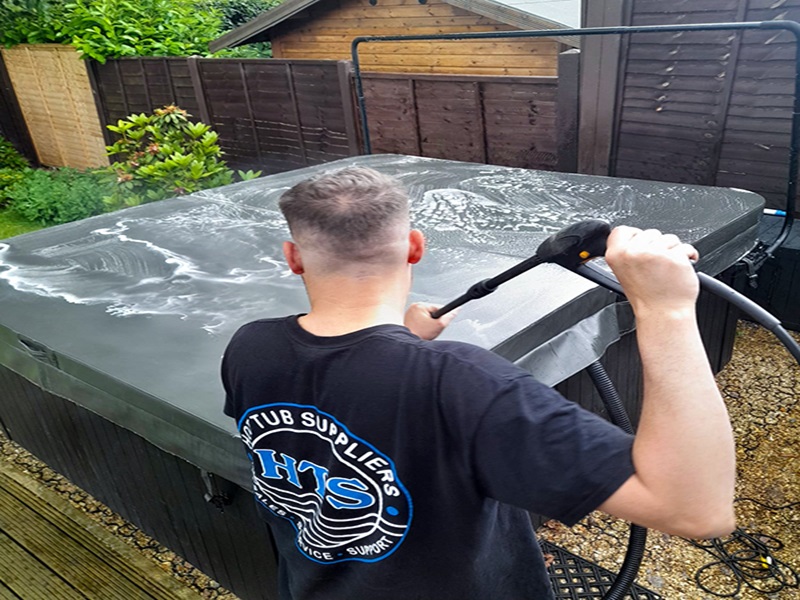Owning a hot tub can be a luxurious experience. Whether you’re relaxing after a long day, enjoying time with friends, or unwinding under the stars, a hot tub is a perfect addition to your home. However, to ensure that your hot tub remains clean, functional, and safe, regular maintenance is key. If you’re new to hot tub ownership, don’t worry! In this comprehensive guide, we’ll walk you through everything you need to know about hot tub maintenance for beginners.
1. Why Hot Tub Maintenance is Important
Proper maintenance is essential for several reasons:
- Longevity: Regular care extends the life of your hot tub, ensuring that it works optimally for many years.
- Water Quality: Clean water is vital for your health. Without proper sanitation and filtration, the water in your hot tub can become a breeding ground for bacteria, algae, and other harmful organisms.
- Safety: Faulty equipment or poor water quality can result in injuries or skin infections.
- Efficiency: Regular maintenance helps to keep the system running efficiently, saving you money on energy bills and repairs.
2. Weekly Hot Tub Maintenance Tasks
Performing basic tasks on a weekly basis is essential for ensuring your hot tub stays in top condition. Here’s what you should do:
2.1 Check the Water Chemistry
Maintaining proper water chemistry is one of the most important aspects of hot tub maintenance. The water in your hot tub should be balanced to prevent scaling, corrosion, and skin irritation. The key elements to monitor are:
- pH Level: The pH level should be between 7.4 and 7.6. Too high or too low of a pH can lead to equipment damage or skin issues.
- Alkalinity: This helps to stabilize pH levels. The ideal range is 80–120 parts per million (ppm).
- Sanitizer: Most hot tubs use chlorine or bromine to sanitize the water. Chlorine levels should be between 3–5 ppm, and bromine should be between 4–6 ppm.
- Calcium Hardness: This helps prevent water from becoming too soft and potentially damaging the hot tub’s equipment. It should be between 150–250 ppm.
You can use water test strips or a liquid test kit to measure these levels. Adjusting them as needed will help maintain a clean and safe hot tub environment.
2.2 Clean the Filters
The filters in your hot tub are responsible for keeping the water clean by trapping debris. Over time, they can become clogged with dirt, oils, and minerals, which can reduce their efficiency.
To clean your filters:
- Remove the filters from their housing.
- Use a hose with high pressure to remove dirt and debris.
- Soak the filters in a filter cleaner solution (available at hot tub stores) to remove oils and built-up residue.
- Rinse thoroughly and allow the filters to dry before reinserting them.
You should clean your filters at least once a week, or more often if you use the hot tub frequently.
2.3 Inspect the Water Level
The water level in your hot tub should always cover the skimmer. If it drops below this point, the pump could run dry, leading to potential damage. Check the water level regularly and top it up as needed.
3. Monthly Hot Tub Maintenance Tasks
While weekly maintenance ensures your hot tub stays clean, there are tasks that should be performed monthly to keep everything running smoothly.
3.1 Shock the Water
Shocking the water helps to break down organic compounds like oils, lotions, and sweat that accumulate in the water. It’s important to do this monthly, or after heavy use. Shocking helps to reset the sanitizer levels and maintain water clarity.
To shock your hot tub:
- Add the appropriate amount of shock treatment (usually in granular form).
- Dissolve the shock treatment in a bucket of water before adding it to the hot tub.
- Run the jets for 15-30 minutes to circulate the chemicals throughout the water.
- Allow the water to rest for 24 hours before using the hot tub.
3.2 Clean the Cover
Hot tub covers protect your spa from debris and the elements, but they can also collect dirt, algae, and other grime. Cleaning the cover monthly will extend its life and help keep the water clean.
To clean the cover:
- Use a mild soap and water solution to wipe down the cover.
- Rinse thoroughly and allow the cover to air dry completely before putting it back on.
- Check for any signs of wear and tear, such as cracks, tears, or mildew growth.
3.3 Check the Jets and Plumbing
Inspecting the jets and plumbing ensures that there are no blockages or leaks. Check the jets to see if they are working correctly, and look for any signs of mold or mineral buildup.
If you notice anything unusual, such as low water pressure or malfunctioning jets, it may be time to call a professional for a more detailed inspection.
4. Seasonal Hot Tub Maintenance Tasks
Seasonal tasks help keep your hot tub in top condition year-round. These tasks are typically performed every 3-6 months, depending on the season.
4.1 Drain and Refill the Hot Tub
Over time, water can become stale, and chemicals can build up, making it harder to maintain water balance. Draining and refilling your hot tub every 3-4 months ensures that the water remains clean and fresh.
To drain your hot tub:
- Turn off the power and disconnect the electrical supply.
- Use the drainage valve to empty the water.
- Once empty, scrub the shell with a non-abrasive cleaner to remove any built-up residue.
- Refill the tub with fresh water, balancing the chemistry once filled.
4.2 Winterizing Your Hot Tub
If you live in a colder climate and don’t plan to use your hot tub during the winter, it’s important to winterize it to avoid damage from freezing temperatures.
To winterize your hot tub:
- Drain the water completely, ensuring there’s no remaining water in the pipes.
- Blow out the plumbing lines using a shop vac or air compressor to remove any residual water.
- Clean and dry the hot tub thoroughly.
- Place a cover over the hot tub to protect it from the elements.
4.3 Inspect the Heater
The heater is an essential part of the hot tub, especially if you use it during colder months. Inspect it periodically for any signs of corrosion, leaks, or malfunction. If you notice any issues, it may need professional servicing or replacement.
5. Troubleshooting Common Hot Tub Problems
Even with regular maintenance, hot tubs can occasionally experience issues. Here are some common problems and their solutions:
5.1 Cloudy Water
Cloudy water can be caused by poor filtration, imbalanced chemicals, or high levels of debris. To fix this, clean the filters, shock the water, and adjust the pH and alkalinity levels.
5.2 Low Water Flow
If the water flow is weak, check the filters, pumps, and jets for blockages. Clean or replace the filters as needed, and ensure that the jets are clear.
5.3 Leaking Hot Tub
A leaking hot tub can be caused by faulty plumbing, seals, or the shell. If you notice water pooling around the hot tub, inspect the pump, hoses, and seals for leaks. If you cannot find the source of the leak, consider hiring a professional.
Conclusion
Proper hot tub maintenance ensures that your spa remains a safe and relaxing environment for years to come. By performing regular checks, maintaining water balance, cleaning filters, and inspecting equipment, you can avoid costly repairs and enjoy a trouble-free hot tub experience. With the right care and attention, your hot tub will continue to be a source of relaxation and enjoyment for many seasons to come.



